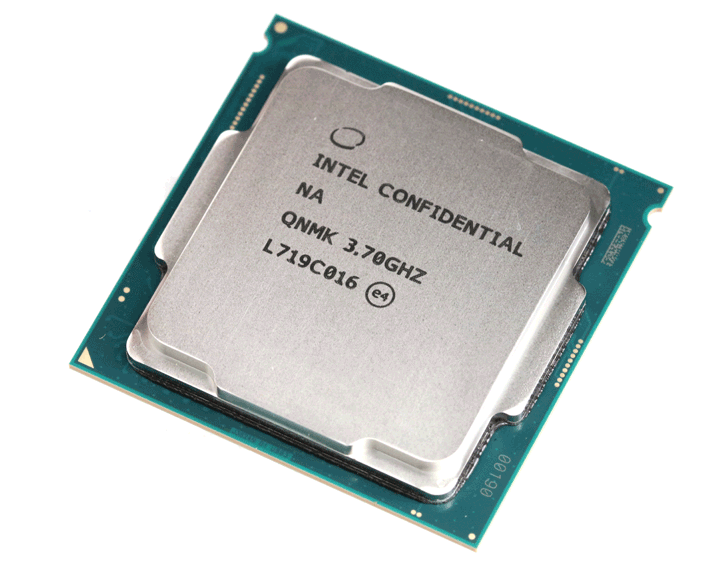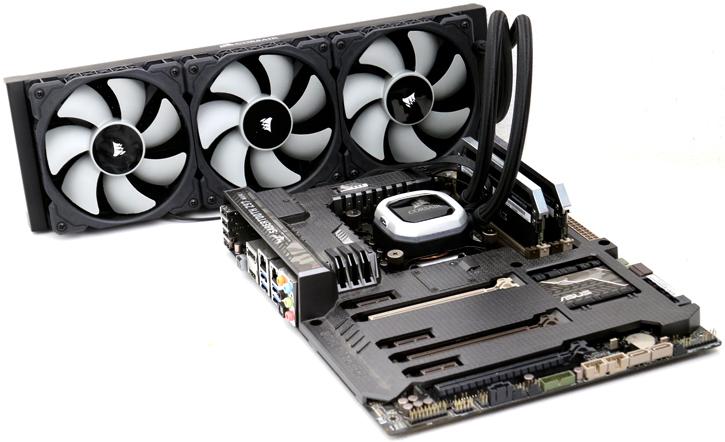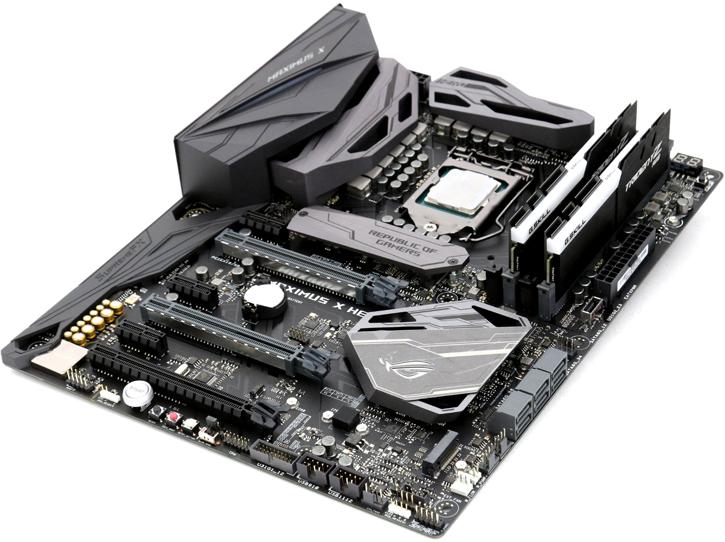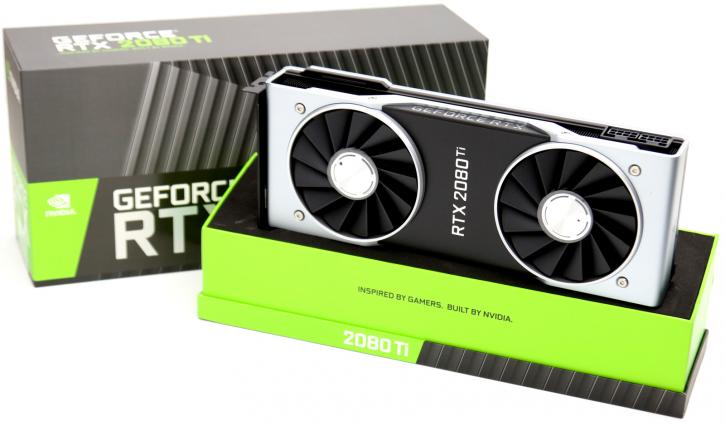The Gigabyte - The End All Build
The Gigabyte - The End All Build
So, we're finally here. This is, without a doubt, an utterly ludicrous amount of money to be spending on a PC. This is more fantastical than anything else, but by all means please use parts of this guide as you see fit in order to perhaps add to 'The Byte', seen before. As said right at the start of this article, these build lists are merely guidelines, and should be treated as such. There are many way to make 'The Byte' higher end, without much effort. An 8700k, bigger cooler, nicer motherboard, faster GPU, etc. This build/list is merely the embodiment of taking everything about 'The Byte', and turning it up to 11 and beyond.
In terms of total spend, here, we are realistically looking at a USD total in excess of $3000, especially when one needs to add a monitor, mouse, keyboard, and other peripherals. CPU and GPU choice is basically split between two CPUs, and one GPU only. I think, in the case of the latter, you can probably guess what it is going to be. Without any further ado, shall we get on with this?
One final caveat. SLI (or, now, NVLink) is supported on RTX Turing GPUs. However, we then run into a problem with the number of available PCIe lanes. Mainstream Intel CPUs ship with 24 lanes, traditionally meaning 16x for a single card, and then 8 remaining for another GPU running at 8x, or even extra drives. Gamers Nexus did an excellent article investigating the impact of running 2080Ti GPUs together on mainstream Intel CPUs. If you are interested, it is linked here. They discovered, perhaps predictably, that there is a small (1% or so in all aspects) impact on frame rates when running one GPU at 16x, and the second at 8x. However, that does mean that you then have no available lanes for high-end NVMe drives or other devices, which means they must communicate through the chipset, slowing performance. It is our recommendation, therefore, to not run SLI setups using such high end cards on mainstream Intel/AMD chipsets.
CPU: Intel Core i7 8700k, AMD Ryzen 2700X, or incoming Intel Core i9 9900k
Here, the choices of CPUs are fairly limited, but only because they are the highest end that each company has to offer. In the Intel camp, we have the 6 core/12 thread Intel Core i7 8700k. Based off the now thrice refined 14nm process, this CPU forms one half of the duo needed to utterly dominate games. At stock, the CPU is certainly a winner. However, the true potential of the 8700k really comes into the fore when the silicon is pushed to the limit. When paired with a solid motherboard and large cooler, the 8700k is capable of speeds in excess of 5Ghz. Now, that magical figure does require that large cooler, as well as a decent bit of luck in the famed Silicon Lottery. Even without the latter, however, 5Ghz is entirely achievable. Not that it is strictly relevant for this article set, but at this speed, the 8700k is capable of high-end gaming and content creation alike. Choose this CPU, and you will not be disappointed.
So what of AMD, then? Our recommendation stays the same as last time. A nicer motherboard and bigger cooler should allow the 12nm 8 core/16 thread processor to reach its full potential. Whilst it does strictly lose to the 8700k in gaming applications (to varying degrees, depending on the resolution and game), it is still a fantastic processor that we at Guru3D loved. The resolution is, also, less of... well, an issue, due to the very idea of this build targeting high-resolution gaming, where more strain is placed upon the GPU. Not that it matters (again), but the 2700X is also an excellent content creation and even entry level workstation grade CPU, where it's high core count really does give it the potential edge over Intel's 8700k. That, however, might be about to change, thanks to...
Intel's upcoming Whiskey Lake architecture contains perhaps the worst kept secret in the CPU industry in living memory. In a direct answer to the 2700X (and it can only be a direct answer), the incoming Core i9 9900k will sport 8 cores, 16 threads, and an unknown base/boost clock. Not that, given the 'K' SKU, the base/boost clocks really matter for the kind of people in the market for a CPU of this caliber. I think it's safe to say that in many aspects, it will give the 2700X a fairly good beating around the park. For an AMD response, however, look no further than the 2019 release of Zen 2, based on the 7nm process from TSMC. The only thing that remains to be seen (regarding the 9900k) is price, though naturally here we are ignoring pricing for this level of PC. If you wanted to wait to see what the 9900k will do, then I could not blame you.
CPU Cooler: Corsair H150i Pro
The 'big' AIO has seen a surge this year, with several vendors either releasing entirely new models or adding 3x 120mm variants to older lines. We have chosen to go with Corsair's excellent 360mm H150i AIO. The specs are pretty beastly, and it has a price to match. However, just know that the product was able to nearly clinch a top-five position in our review. The Guru3D test bench consists of a 22nm 4790k with 1.3v running through the 4 cores. 71C was the highest temperature we saw. Expect fairly similar results with the higher core count but more refined (in terms of process) 8700k, 2700X, and 9900k. I somewhat suspect despite the smaller nodes, these three CPUs will provide a tougher test for the H150i, but nothing that I would consider remotely dangerous or unsafe. Remember, stress tests are called stress tests for a reason. During gaming, or general use, your temperatures will be significantly more 'tame.'
Motherboard: Asus ROG Maximums Hero X (Intel), or Asus ROG Crosshair 7 Hero (AMD)
I mean... we're spending all of this cash. It would feel wrong, therefore, to not also max out the reasonable motherboard budget. Normally I am 100% against spending excessive amounts of money on mainstream chipset mainboards, but here I will make an exception. The Maximus Hero (and, by that measure, the Code) from Asus represent the best of the Z370 chipset lineup, with stellar build quality, excellent connectivity, and as good a VRM as you're ever going to get. All of these combine to pretty much justify the $250 USD price tag. There is, also, an added bonus in going for such a high-end board. Given that the upcoming Whiskey Lake CPUs are reported to be supported on the Z370 chipset, one could potentially upgrade their 8700k based system to a 9900k system. The 9900k will put a heavier demand on the system, especially when OCed. The Hero, however, can handle it.
If you cannot find the Asus product above, however, then there are many alternatives. The highest end offerings from the likes of MSI (Z370 Godlike Gaming), Aorus (Z370 Gaming 7 Wifi), or AsRock (Z370 Taichi) are all excellent, so do not feel like as though you are missing out at all.
I have said everything that I need to regarding motherboards, at this point. However, the highest end offering in the X470 space is also from Asus, the Crosshair 7 Hero. You can read the Guru3D review of the product here, where Hilbert commented on the excellent aesthetics, LEDs, build quality, and ease of overclocking the 2700X with the very comprehensive UEFI. I don't think there is much more to say, here.
RAM: 32GB Corsair Vengeance Pro RGB, 3200MHz
Realistically speaking, at this price point, you could really get whatever RAM kit that took your fancy. Many kits of memory in 2018 are coming with RGB on them, especially at the high end, allowing for an easy visual tweak that (in my opinion) is one of the better ways to allow your new PC to 'pop' really rather dramatically. We recently reviewed this kit of memory from Corsair, and found that it was even stable at 3600Mhz using slightly relaxed timings and more DRAM voltage. A good result, in anybody's book. Fast and good looking memory is, sadly, still very expensive. That said, if you're spending up to and beyond 3000 USD on a PC... do you really care? I should mention that these modules are especially tall, so please take this into account if you are using an air cooler that overhangs the memory slots.
Other options are available, should you find this kit prohibitively expensive or simply unavailable where you are. Crucial Ballistix Elite, GSkill Sniper/Trident Z, and similarly high-end offerings from the likes of Team Group, Adata, and Corsair, are available for your perusal.
Storage (1): 1TB Samsung 970 Evo
Similar medium to before, different ballgame. The semi-recently released Samsung 970 Evo M.2 SSD is, without a doubt, one step off the best SSD of this form factor on the market today. Period. The review, from back in April of this year, can be found here. It does make much more sense from a financial perspective than the 970 Pro (which, to most people, I would see as spending more money than is really necessary). We are, here, building an all-out PC, but common sense has to still prevail in some areas. In our basic file copy tests, the 970 Evo consistently found itself either topping the charts, or at least in the top three. This drive is currently just $277 off Amazon US. If you think about it, that's around 6.2x more expensive than an equivalent 1TB HDD spinning at 7200rpm. Yes, it's a lot of money extra, but at this point, we don't care. For two, how much of this is really about 'power' vs. 'practicality'?
Storage (2): Crucial MX 500 2TB
Yes, we're back on SATA, again. Realistically, whilst you could populate your rig almost entirely with NVMe devices, bulk storage and the size of modern AAA titles can still become prohibitive. Therefore, it makes sense to go with a storage medium that finds a nice middle ground. The MX 500 from Crucial is the next in the line of the 'MX' series of drives from said company, utilizing Micron's TLC NAND flash memory. The review of this drive can be found here, but - in a nutshell - performance wise, the drive found itself fairly consistently in the middle of our big ol' table of tested devices. Crucially (...fully intended), however, it consistently reached the 'sweet spot' in terms of file copy performance, averaging in the 475-500 MB/s range. This is, ideally, what you want out of a SATA drive. If it's consistent, then all the better, and the MX500 was very consistent indeed.
You could also elect to go for Samsung's highly competitive 860 Evo drive, here. The prices between the two on PCPartPicker (USA) are virtually the same, and you would not be disappointed with either device. The reason the particular shout out, in this instance, has gone to Crucial was pricing at the time of review, allowing it to nail the '$ per GB' battle, which is a... vital one. Yes, the temptation to say 'crucial' was very great, just then.
GPU: Nvidia RTX 2080 Ti
I mean... was there any other choice, really? Sure, it may not have been the utterly blazing generational uplift that we were all expecting, but a consensus of roughly a 30% performance boost in applications/games isn't anything to sniff at. Sure, the pricing is a little hard to take, but if you're already looking at spending around $3000 on a PC, then this is really the only graphics card that makes sense to use in 2018. Sure, you could still go with SLI 1080Ti's, and two of those would utterly hammer a single 2080Ti, but... ok, read on for a little rant about SLI and why it almost never makes sense.
Issues with SLI:
- SLI almost never scales perfectly in games, meaning you are wasting some potential performance of your second GPU.
- SLI adds significant extra heat output and power draw to your system, which must be taken into account.
- SLI can result in stuttery gameplay, due to poor dual GPU implementation and bad frame times.
- The arrival of NVLink to mainstream Turing GPUs is only a rebranding of SLI. True NVLink is still the domain of the datacentre.
Turing, of course, has some downsides. It is very expensive, is brand new tech (you are undoubtedly paying a hefty 'early adopter' tax), and we haven't even seen the arrival of real-time ray-tracing in games yet, because no games that currently out support it! That said, both Battlefield V and Shadow of the Tomb Raider will do so, post-launch. There is, also, the somewhat unknown quantity of just how much the enabling of RTX in game will affect GPU performance. Right now, the 2080Ti is, really, the only single GPU capable of even considering 4K high refresh gameplay. Now we are seeing high-end G-Sync capable 4k 144hz monitors, GPUs like the 2080Ti make at least some sense.
The cards will start shipping soon, and inevitably the MSRP of them will be entirely ignored, with some AIB models likely fetching north of 1,400 USD on release. Our advice is to use your common sense, and pick a model of GPU that you like, but also isn't hideously overpriced when compared to what the MSRP really should be.
PSU: Corsair HX1200i, EVGA Supernova 1200 P2, Seasonic Prime Platinum 1200W.
Yes, this is absolutely overkill, and I am well aware of that. However, the presence of a 1200W PSU does make some sense. Why? Well, despite everything I have said above regarding the future and the current state of SLI, some people do still seek the highest FPS possible without any regard for the above. These choices of PSU, therefore, are for them, and them alone. With an 8700k and 2x 2080Ti's (at stock, mind), total system power draw could be well in excess of 700W in high-stress situations (e.g. both cards maxed out, CPU close to 100% activity keeping both GPUs fed with instructions). Given that most commercial PSUs are at their most efficient at around 45-60% load, and... well, you do the maths. The above also does consider the possibility that an 8700k might not be enough for such a user, therefore necessitating the upgrade to an overclocked 9900k.
If, however, you are certain that you do not wish to ever use SLI, then please feel free to significantly peg the above recommendation back. Similarly, rated units (i.e. carrying that lovely 80+ Platinum sticker) in the 750W range are notably cheaper but do not sacrifice on build quality.
Conclusion
Over the last few pages, we have gone from the very lowest end of things to the highest. However, we are not 'quite' done. Not yet. Turn over, please, for what we have to say about the highly emergent HEDT market.





